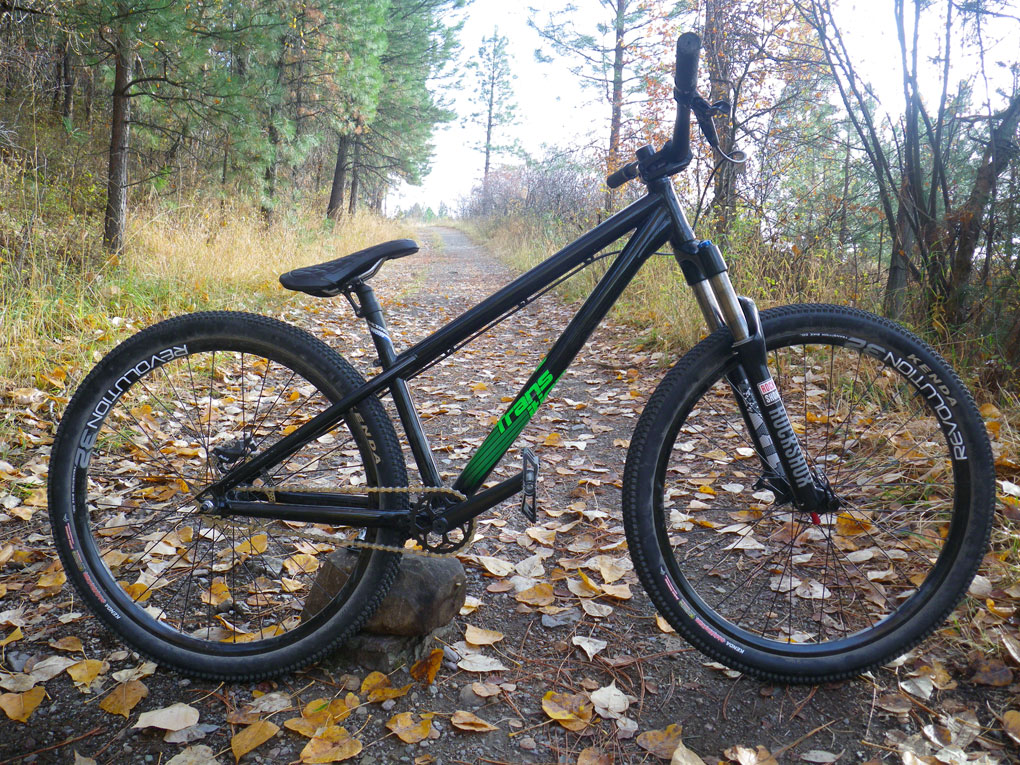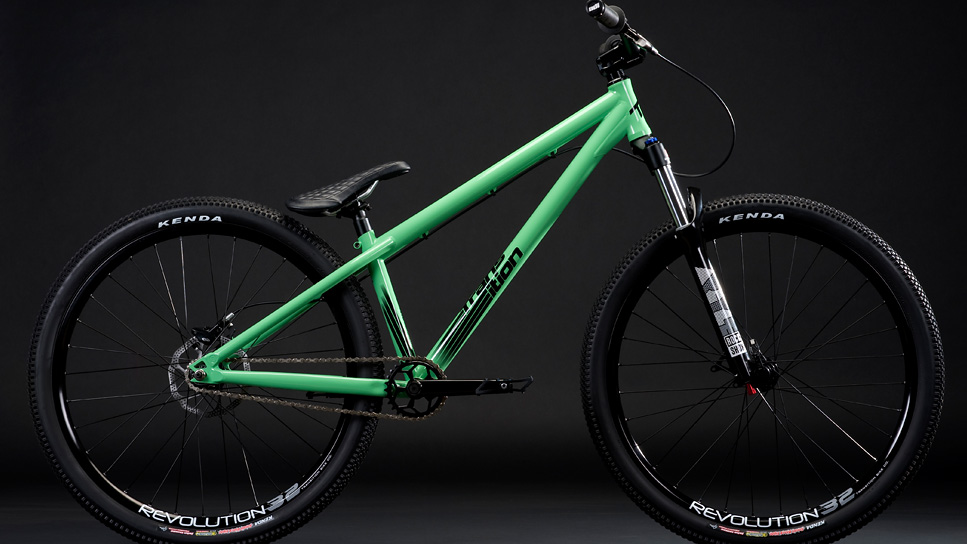Bike: 2012 Transition Trail-or-Park
Intended Use: Dirt jumps, pump tracks and skate parks
Size Tested: Regular (22.5” Effective Top Tube)
Bike Weight: 27.9 lbs. complete (with pedals)
Geometry Chart
- Size Regular
- Reach 15.28″
- Stack 22.17″
- Top Tube (Effective) 22.5″
- Seat Tube (center to top) 13″
- Head Tube Angle 69.5°
- Seat Tube Angle 72°
- ChainStay Length 15.75″ – 16.5″
- Bottom Bracket Drop 1.37″
- Bottom Bracket Height 12.3″
- Standover 25.0″
- Wheelbase 40.5″ – 41.3″
- Head Tube Length 4.725″
- Max Rear Tire Clearance 26″ x 2.5″
Tester Info: 5’10”, 165lbs., 32″ inseam. Dirt jumping for the last 10 years, hang time is my friend.
Test Locations: Backyard pump track and dirt jumps in Whitefish, Montana; skate parks in McCall, Idaho, and Missoula, Montana; Some street shredding around Missoula and Boise.
Days Ridden: 60+
MSRP: $1,549
According to Transition, the Trail-or-Park (ToP) is their “no compromise dirt jump and park bike” built for the rider who demands durability, style, and versatility. Its single-speed steel frame resembles a 26” wheeled BMX bike more than a mountain bike. In the ever-progressing world of Freeride, jump bikes are a dime a dozen and typically a quiver bike, unless you devote tons of hours (and blood) to the sport.
I’ve always appreciated Transition’s approach to being a rider-owned company: Transition values rider input, and they work closely with their sponsored athletes to develop bikes that are simple, practical, and well built.
Build
The standard build kit for the ToP resembles a Transition catalogue: pedals, cranks, stem, grips, saddle, and the popular Revolution 32 wheelset all bear the Transition stamp. Other notable parts include a RockShox Argyle RC 100, Avid Elixr 5 rear brake (no front brake—think tailwhips), KORE Torsion 32” bars, and Kenda Small Block Eight shoes. (More on these components later.)
The Ride
Ever since selling my last dirt jump bike (a Trek Jack with very similar build) before moving to Montana, I’ve kept an eye out for something to fill the void. I thought about building one up from scratch to get exactly what I wanted, but that tends to be more expensive, even for a simple bike such as this, so I got to looking at companies that offer a complete, shred-ready package. Pretty much every major brand has a bike like this in their line-up, and prices are competitive. Parts are closely matched across the board, with a few changes here and there.
Geometry is key for me when looking for any bike. Top tubes ranging from 22-23”, low standover, 69-degree head angle, and short chainstays are all things I look for when deciding on a dirt jump frame. I knew I didn’t want to spend a bundle for a quiver sled, and the ToP fit my price range well enough.
The trend in this arena seems to be: build a frame out of steel that is light(ish) with similar components to a BMX bike, but retain MTB prowess. Single-speed, horizontal dropouts, three-piece steel cranks, bolt-on hubs, rear brake only are all things MTB dirt jumpers have adopted from the BMX world (which have been around forever and really originated in the road bike world). No frills, no need to worry about pedaling uphill or long distances. Build it strong and make it fun to ride.
I ended up pulling the trigger on the Trail-or-Park because of the similar geometry to my old Trek and its simple, no BS attitude. Right out of the box I was impressed with the construction and bombproof-ness. (It’s a pretty good looking whip, too.)

The ToP is intended to slay sculpted dirt, concrete, or any abnormal feature found in some obscure alley. The brawny 4130 cromoly frame is well thought out with lots of jump-specific features. Highlights include a 73mm euro-style bottom bracket, integrated zero-stack headset, horizontal dropouts (optional rear derailleur hanger sold separately), tucked away brake cable routing, and integrated seat clamp.
New for 2012, the euro-style BB gives owners the option to run either three-piece BMX cranks or standard MTB cranks. But let’s be honest here: you want the BMX setup if you’re looking for longevity and strength. There’s just something about having burly straight-gauge steel bars under your feet that inspires confidence. I also find that on sketchy landings, having a crank of similar size to the pedal provides a large landing pad for an un-aimed foot (something that regular MTB cranks just don’t offer because of their asymmetrical shape).
The integrated headset with zero-stack bottom cup is a nice feature for getting the front end low. I run almost all my bikes with the stem slammed and low-rise 30” bars. I like more of a moto-style feel, having my body position over the front of the bike. Right away I noticed how the front end of the ToP felt a bit tall. This sort of posed a problem for me, as the stack height (22.17”), even with the integrated headset and slammed stem, never felt low enough.
The easy fix is to install a 20mm travel spacer into the fork, something any capable mechanic can do with proper tools. (Though it’s worth nothing that the downside to this solution is that you lose an inch of travel.)

